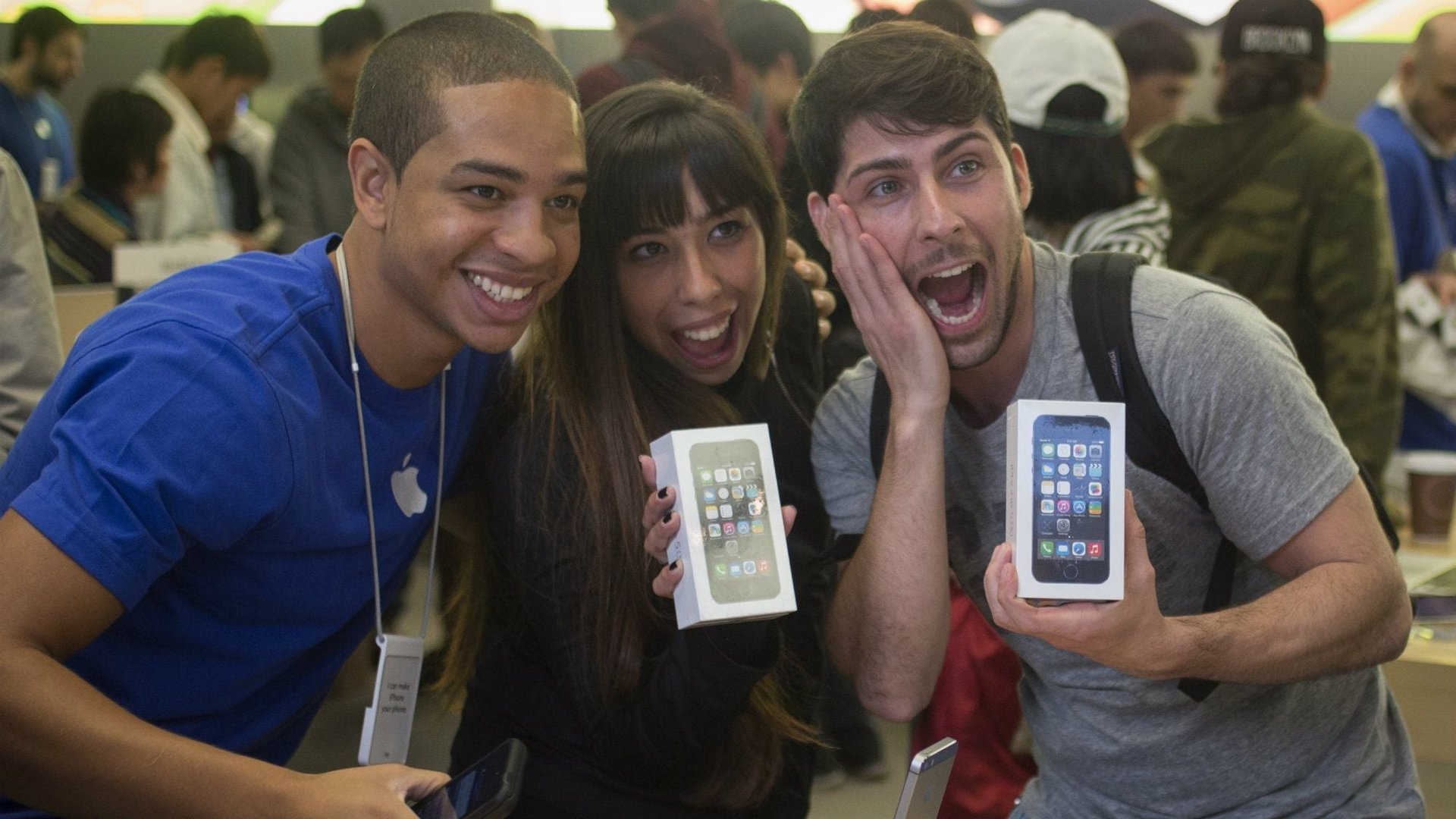A majority of the world’s mobile users will be on smartphones by 2019
Two-thirds of the world’s mobiles are dumb phones.


Two-thirds of the world’s mobiles are dumb phones.
Although lacking the whizzy features of smartphones—namely, touchscreens and a wide array of internet-connected apps—mobiles that do little besides make calls and send texts remain the only viable option for many people in poorer countries. And companies are finding that there’s money to be made from these phones, which are often the first mobiles that millions of people in Africa, Asia, Latin America, and elsewhere will get.
But as smartphones become increasingly affordable and desirable, the holdouts are trading up and first-time buyers are opting for full-featured models. In a recent report, PricewaterhouseCoopers reckons that by 2019 a majority of active mobile connections in the world will be on smartphones.
In some countries, the smartphone tipping point has already passed—more than 50% of mobile users in Singapore and Sweden have been using smartphones for more than five years. Still, there are many other countries, and not just lower-income ones, that have yet to see smartphones become the most popular option among mobile users.
Here are PwC’s projections for smartphone penetration in 26 countries, grouped by region:
North America
Five years after the first iPhone was unveiled to the world in San Francisco in 2007, smartphones crossed the tipping point in the US and Canada.
Western Europe
A majority of Dutch mobile users were tapping away at smartphones as early as 2010. Italians won’t do the same until next year.
Eastern Europe
On the eastern edge of Europe, the tipping point won’t come for two years or more, with Russia lagging the region’s other big economies.
Asia Pacific
Koreans have proved more enthusiastic adopters than the Japanese, while the massive markets of China, India, and Indonesia won’t pass the smartphone tipping point until 2019, at the earliest.
Africa
Kenya will reach majority penetration earlier than other big countries on the continent; Nigeria is a notable laggard.
Latin America
Argentina and Brazil are due to pass the 50% mark two years before Mexico. With Venezuelans facing shortages of food, medicine, and toilet paper, buying a new smartphone is low on the list of priorities.